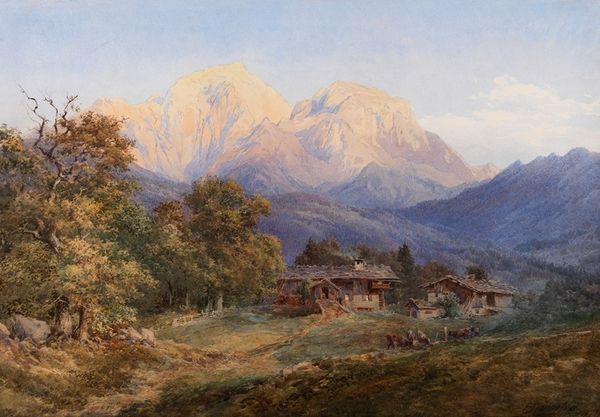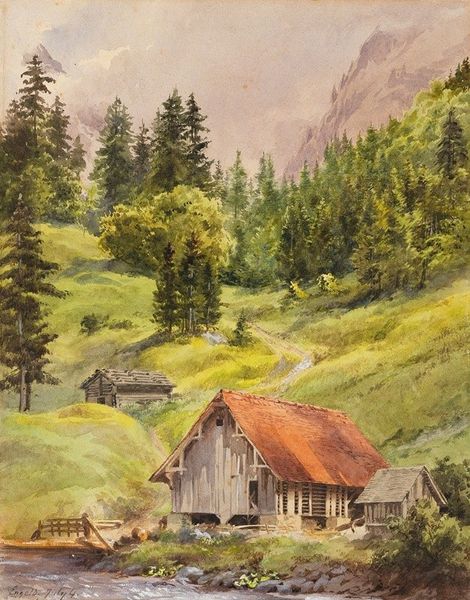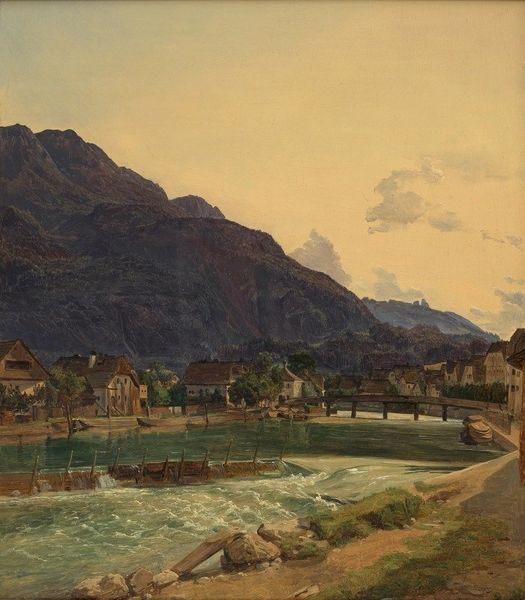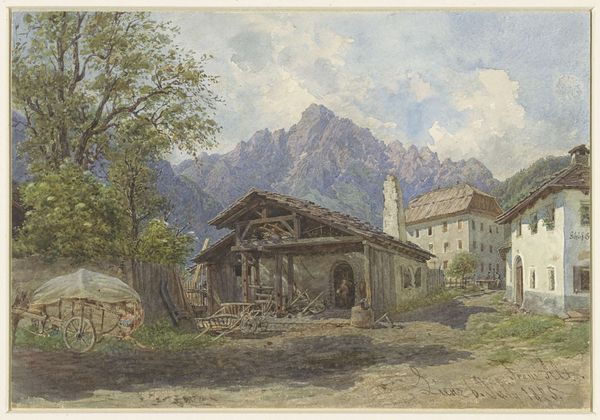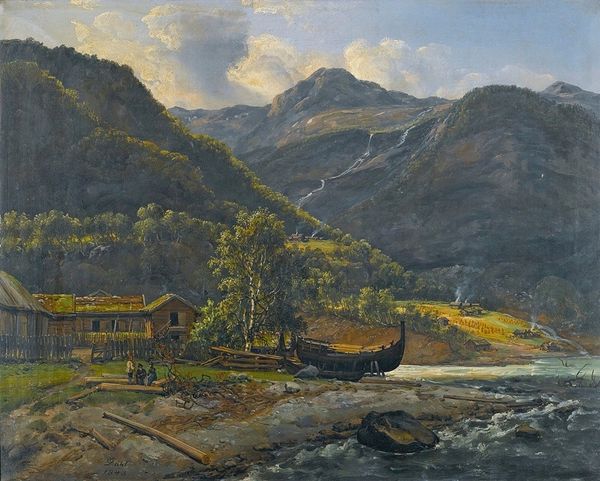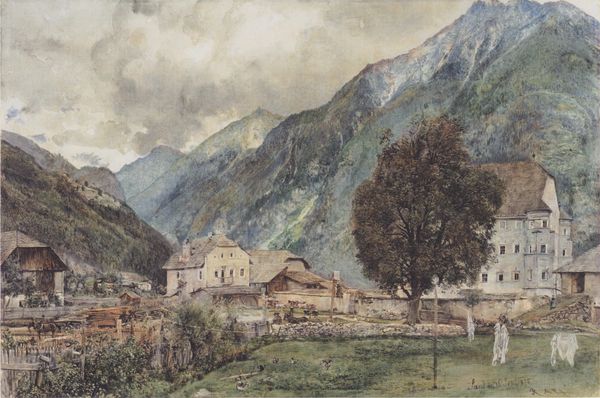
Dimensions: 46 x 30.5 cm
Copyright: Public domain
Curator: This is "Berchtesgaden," an 1889 oil painting by Antonietta Brandeis. It captures a sweeping vista of the Bavarian Alps. What strikes you most about it? Editor: The textures, definitely. The rough-hewn wood of the buildings contrasts with the sheer, towering rock face. It immediately speaks to the intersection of human industry and the formidable power of the natural world. Curator: Brandeis, although Italian, was known for her landscapes throughout Europe. She painted idyllic scenes that really tapped into the late 19th-century romanticism, reflecting the idealized vision of the area. The quaint architecture supports this idyllic aesthetic. It's important to consider that these landscape paintings often bolstered tourism in regions like Berchtesgaden, marketing them as untouched paradises. Editor: Precisely. I see the deliberate choice to focus on the labor. See the figures by the building near the flowing river? This suggests more than just simple prettification. We are clearly meant to understand the modes of life—the rural labor shaping and depending on this landscape. What's the context for this image being consumed, particularly by the upper classes? Did it serve a particular class narrative, where rustic life romanticizes labor rather than portraying its harsh reality? Curator: Absolutely, we have to read this idyllic view within the broader social framework. As for its consumption, Brandeis often sold her paintings to wealthy tourists and patrons, capitalizing on this very desire for idealized landscapes and genre paintings. Editor: Look at how that contrasts to those materials. You’ve got the rough stone of the mountains, versus the deliberate construction with the planks that channel that river's energy. And I see it continuing that dichotomy between the sheer imposing permanence of that range against those obviously impermanent wooden constructions. The people in this frame seem pretty small, too. How does this all speak to human presence within this setting? Curator: Exactly, and I think that contrast between the natural and constructed landscape is very much by design, placing this town inside of this sublime setting. It seems Brandeis wanted to explore those themes prevalent within Romanticism, this is more of an invitation for the upper classes. This really speaks to the political dynamics that defined both artistic production and social life during that time. Editor: Seeing how carefully Brandeis balanced the scene in this composition, and considering its historic consumption—well, it gives a good insight into how art participated in a visual rhetoric of place and power at this period.
Comments
No comments
Be the first to comment and join the conversation on the ultimate creative platform.



